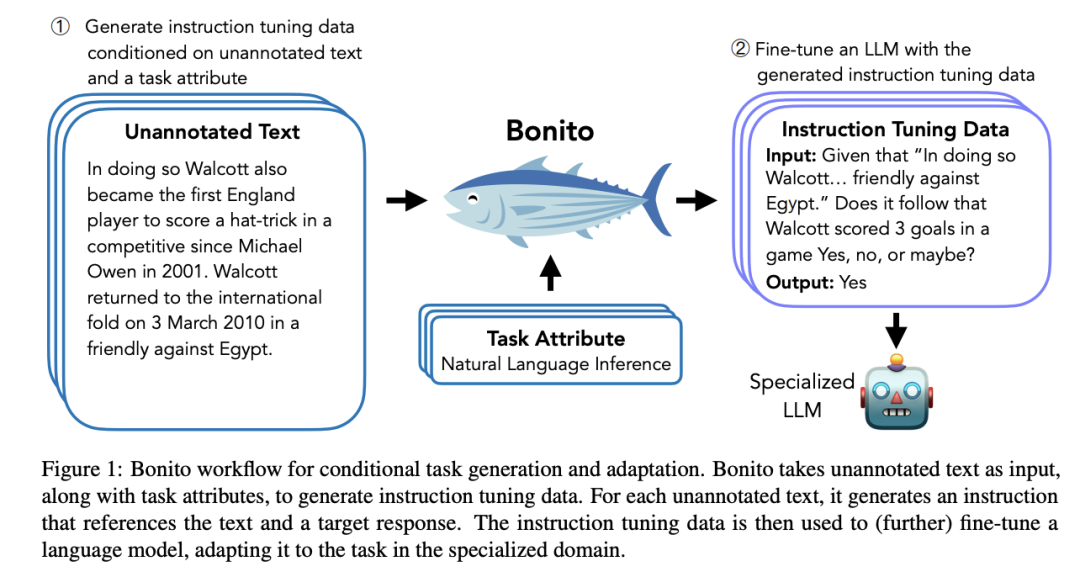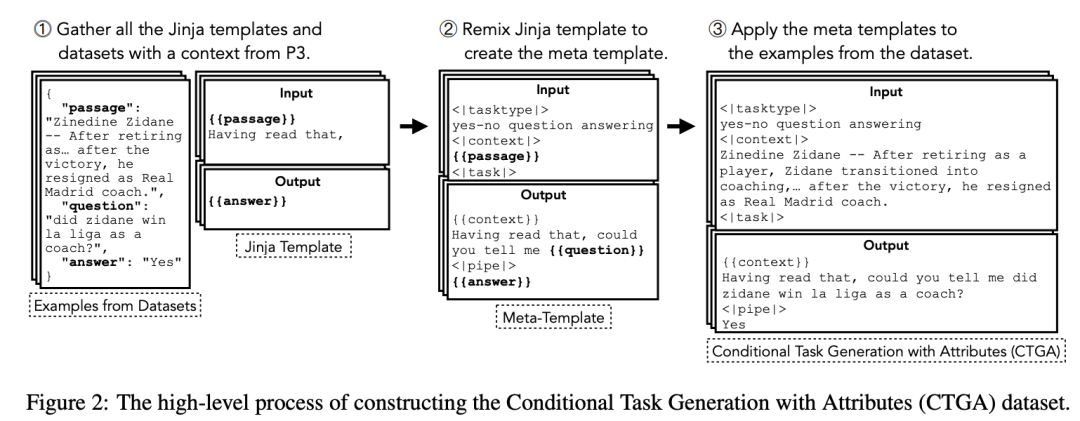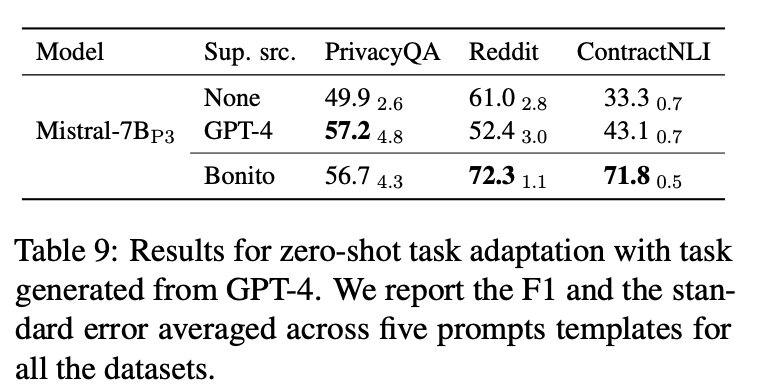没有标记数据集,如何做大模型指令微调?介绍一款有潜力的标记数据集生成模型
在构建大模型应用时,通常有两种方式来改进效果,一种是构建外部知识库,利用RAG来完成。但RAG并不是万能的,对于特定领域的LLM应用,以及无需示例,就能完成特定任务等场合就需要进行微调。然而,微调本身相较于RAG来讲,需要更多的算力资源和时间周期,但更大的瓶颈在于微调需要标记过的样本数据。这对于很多企业来讲,很难有这样高质量的数据积累,他们的数据通常是未经标记的,可能是一篇一篇的文章或者规章制度,并不是以问答对的方式而存在。
为了完成微调,传统做法就是通过人工的方式进行问答对构造,在此基础上斯坦福研究团队也提出了Alpaca使用GPT-4这样的强模型模仿种子样本生成标记数据集。

https://arxiv.org/pdf/2402.18334
笔者介绍一个新的样本数据生成的项目Bonito(https://github.com/BatsResearch/bonito),一个用于条件任务生成的开源模型,它可以将未标注的文本转换为特定任务的训练数据集,用于指令微调。根据论文介绍,该模型本身是在 mistralai/Mistral-7B-v0.1 的基础上,利用包含 165 万个示例的数据集(https://huggingface.co/datasets/BatsResearch/ctga-v1)进行微调,支持多种任务类型,包括多选题回答、是非题回答、自然语言推理、主题分类等。

Benito项目本身是一个数据生成的LLM应用,模型由vllm加速,使用方法比较简单。基本过程为将文档内容提取出来(datasets),比如PDF等,然后指定生成任务类型,并将其传给bonito.generate_task即可。
Bonito定义:
基本使用:
如果想要在显存较小的GPU上运行,如T4,可对模型进行量化。
以tasktype为ynqa,即yes-or-no问题为例,其生成的结果如下:
其中,tasktype支持的任务类型如下:
- 提取式问答(exqa):根据给定的文本片段生成问题答案,直接从文本中提取答案。
- 多选问题回答(mcqa):提供一组多选问题的答案。
- 问题生成(qg):根据提供的文本内容创建问题。
- 无选择问答(qa):在不提供多项选择选项的情况下回答问题。
- 是-否问题回答(ynqa):生成问题的是或否答案。
- 共指消解 (coref):标识文本中引用同一实体的引用。
- 释义生成 (paraphrase):重写具有不同措辞的句子或短语,同时保留原意。
- 释义识别 (paraphrase_id):确定两个句子或短语是否传达相同的含义。
- 句子补全(sent_comp):补全句子中缺失的部分。
- 情感分析 (sentiment):识别文本中表达的情绪,如积极、消极或中性。
- 摘要(summarization):将较长的文本浓缩成较短的摘要,抓住要点。
- 文本生成(Text_gen):基于提示创建连贯且与上下文相关的文本。
- 主题分类(Topic_class):将文本分类为预定义的主题。
- 词义消歧(wsd):根据上下文确定单词的含义。
- 文本蕴含(te):预测一个给定的文本是否在逻辑上遵循另一个文本。
- 自然语言推理(nli):确定两段文本之间的关系,如矛盾、隐含或中性。
在性能上,相较于GPT-4的方案,bonito在三个数据集中两个上取得了超越GPT4的好成绩。

小结:
相较于使用GPT-4生成标记样本的方法,经过专门面向数据集生成微调的模型Bonito来讲,支持zero-shot级别的样本生成,并且可以使用开源的模型,这在开放性,成本、性能上都能具备较强的优势。
随着微调技术的不断普及,相信数据样本质量和生产成本将受到越来越多的重视,benito等这样的数据集生成模型也将迎来更大的发展。
本文转载自 AI工程化,作者: ully

















